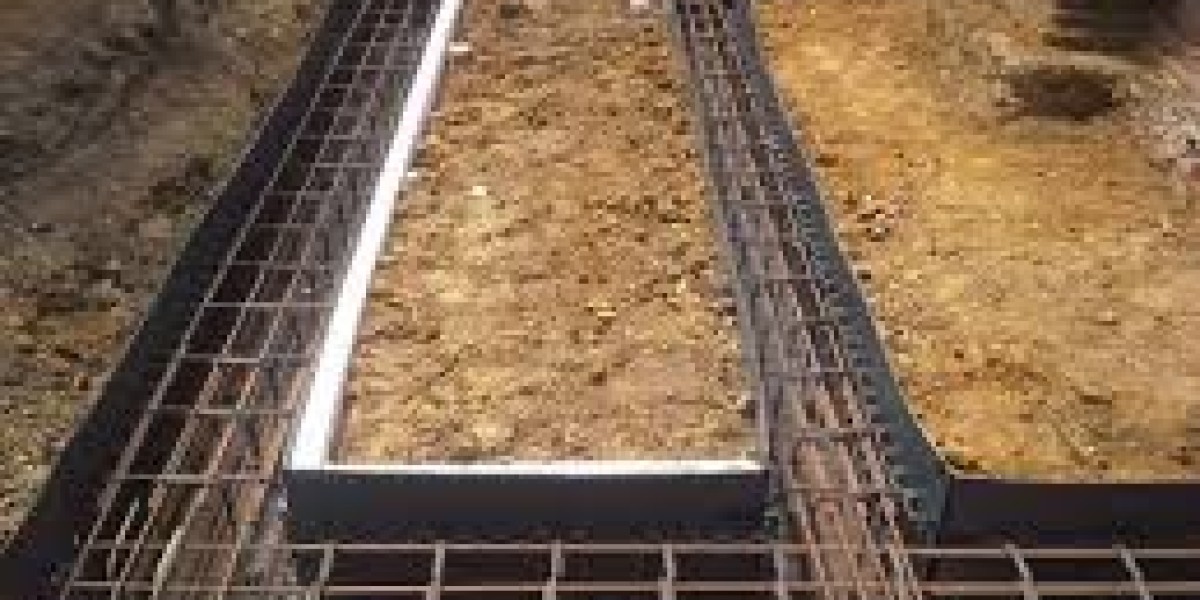When planning and executing a construction project in the UK, ensuring compliance with building regulations is essential. Ground beam foundations, commonly used for modern residential, commercial, and extension projects, must meet strict national standards to guarantee long-term safety and performance. Understanding the legal framework and technical guidance around these foundations helps avoid costly mistakes, delays, or structural failures.
This article outlines the key aspects of UK building regulations related to ground beam foundations, focusing on what developers, contractors, and property owners should know before starting work.
Why Building Regulations Matter for Foundations
Building regulations in the UK serve to ensure that all structures are safe, energy-efficient, and built to last. They cover a range of construction elements, including materials, structural integrity, fire safety, insulation, and drainage. For ground beam foundations, regulations help verify that the design is suitable for the site conditions and capable of supporting the intended load of the structure.
Local building control authorities are responsible for reviewing plans and inspecting work to ensure compliance. This process ensures that foundations, including ground beams, are structurally sound and built according to best practices.
Approved Document A – Structure
One of the most relevant parts of the UK’s Building Regulations is Approved Document A, which deals with the structural stability of buildings. This section outlines the design principles and loading conditions that foundation systems must meet.
Ground beams must be designed to support both vertical and horizontal loads without excessive deflection or movement. The beam must transfer loads to the ground via suitable support elements, such as piles or concrete pads, and must account for ground shrinkage, heave, or subsidence.
In most cases, structural calculations must be submitted to building control. These calculations include factors like beam span, reinforcement details, load paths, and soil bearing capacity.
Soil Investigation and Site Assessment
Before designing any foundation system, including ground beams, a proper soil investigation must be carried out. UK building regulations require that the ground beneath the building is capable of safely supporting the imposed load. This often involves geotechnical surveys to test soil strength, stability, and composition.
The findings of a soil survey determine whether the site is suitable for shallow footings or if a reinforced system like a ground beam is more appropriate. In areas with clay soil, high water tables, or made-up ground, ground beams often offer more reliable performance.
Local planning departments may require a site-specific report, especially in areas with a known history of subsidence or poor drainage.
Structural Design Standards and Eurocodes
In the UK, foundation design must follow the structural standards outlined by Eurocode 2 (EN 1992) for concrete structures and Eurocode 7 (EN 1997) for geotechnical design. These codes have replaced older British Standards but continue to be recognised in practice.
The use of Eurocodes ensures that ground beam designs are consistent with modern engineering practices. They include specifications for reinforcement, beam dimensions, concrete grade, soil interaction, and serviceability limits.
When using Ground Beam Foundation Solutions in the UK, engineers must adhere to these Eurocodes to achieve regulatory approval and ensure safety under different loading conditions.
Concrete and Reinforcement Requirements
UK regulations specify the minimum concrete strength for structural elements such as ground beams. Typically, concrete used for ground beams must meet a compressive strength class of at least C25/30, depending on the building type and exposure conditions.
Reinforcement bars must also comply with British Standards for steel quality, spacing, and corrosion protection. Rebar is usually designed to resist tensile stresses, with proper anchorage at beam ends and intersections. The formwork and concrete cover must meet the required depth to protect the steel from environmental exposure and ensure long-term durability.
During construction, building control officers may inspect reinforcement placement before the concrete is poured to ensure compliance with the approved design.
Thermal and Moisture Considerations
While structural integrity is the primary focus of ground beam foundation regulations, other performance aspects must also be addressed. Thermal bridging and damp resistance are two important concerns that need proper planning.
Foundations in the UK must be protected against rising damp, which can cause damage to both the building and the health of its occupants. Damp-proof membranes (DPMs) and appropriate insulation must be incorporated into the design. Ground beams typically include moisture barriers and insulation at key points where they interface with the building envelope.
The insulation must meet current U-value requirements for ground floors, as set out in Approved Document L (Conservation of Fuel and Power). This ensures that the building remains energy-efficient and meets modern environmental standards.
Drainage and Water Management
Ground beam foundation systems must be designed with proper drainage in mind. Poor drainage can lead to water pooling around the foundation, resulting in ground movement or structural damage over time. Approved Document H of the Building Regulations outlines drainage requirements, including the safe removal of surface and foul water.
Where ground conditions are poor, it may be necessary to install perimeter drainage channels or French drains. These systems help divert water away from the beam structure, maintaining soil stability and extending the life of the foundation.
Additionally, rainwater harvesting or soakaway systems may be required to comply with sustainable drainage guidelines, especially in new builds or larger developments.
Inspection and Compliance Procedures
After submitting a foundation design to building control, the local authority will issue either a Full Plans approval or Building Notice. Throughout the construction process, inspectors will visit the site at key stages to verify compliance.
For ground beam foundations, inspections typically occur after excavation, after reinforcement placement, and before or during concrete pouring. Photographic evidence and engineer certifications may also be required.
Once the foundation has been completed and approved, the builder will receive a completion certificate, confirming that the work complies with all necessary regulations.
Failure to comply with regulations may result in enforcement actions, including stop-work orders, penalties, or the need to remove and rebuild non-compliant elements.
Renovations and Extensions Using Ground Beams
UK building regulations apply not only to new builds but also to renovation and extension projects. When extending a property, especially where the new foundation differs from the existing one, using a ground beam system may offer better load distribution and stability.
Extensions often face challenges such as variable ground conditions or proximity to other buildings. Ground beam systems can bridge these inconsistencies, supporting new construction without undermining nearby foundations.
Even in these cases, regulatory approval and inspections are required, and the foundation must meet the same structural and thermal requirements as any new build.
Sustainability and Modern Standards
Modern UK regulations increasingly prioritise sustainability in construction. Ground beam systems contribute to this goal when designed efficiently, using recycled materials or low-carbon concrete mixes. Minimising excavation also reduces environmental impact, making ground beams a good fit for eco-conscious projects.
In some areas, using sustainable foundation systems may also help secure planning permission more easily. Builders and developers are encouraged to consult with local authorities early in the process to understand what environmental standards may apply to their location.
Conclusion
Building ground beam foundations in the UK requires more than just technical skill it demands a thorough understanding of regulations, standards, and local site conditions. From structural stability to thermal insulation and water management, every detail must align with national building codes and modern performance expectations.
By following guidelines set out in Approved Documents, Eurocodes, and local authority requirements, builders can ensure that their foundation work is safe, durable, and fully compliant. Working with experts who specialise in Ground Beam Foundation Solutions in the UK makes the process smoother and more reliable, helping projects stay on time, within budget, and up to code.



